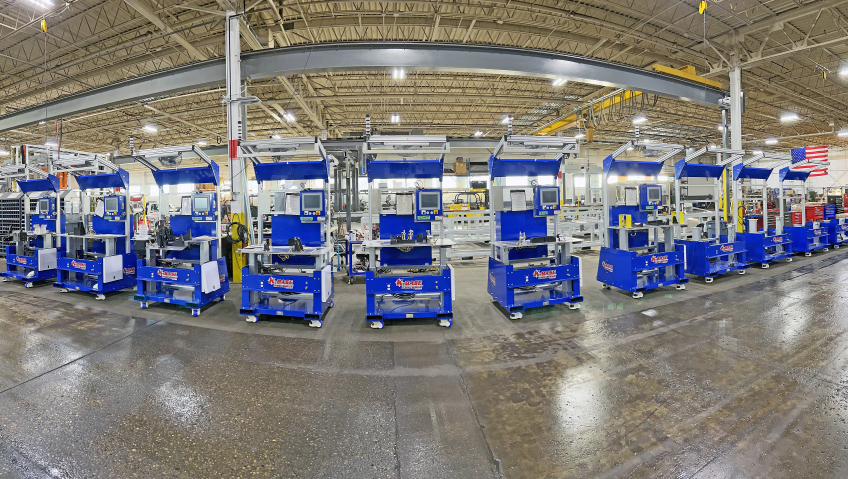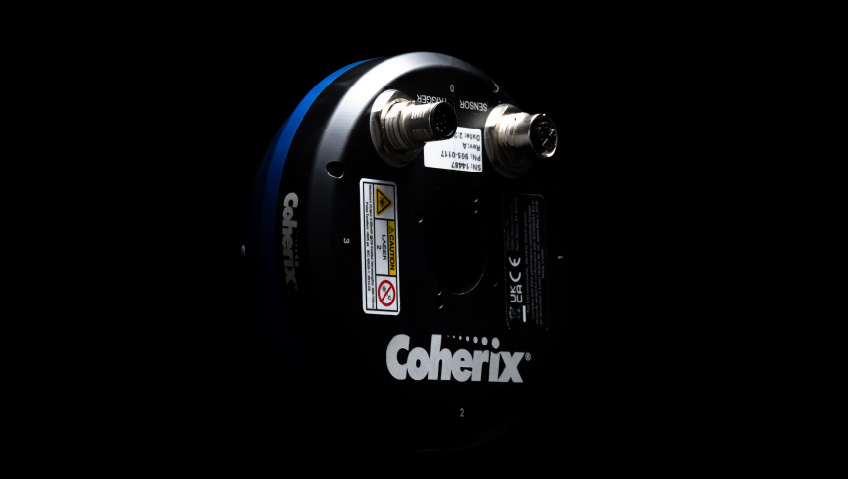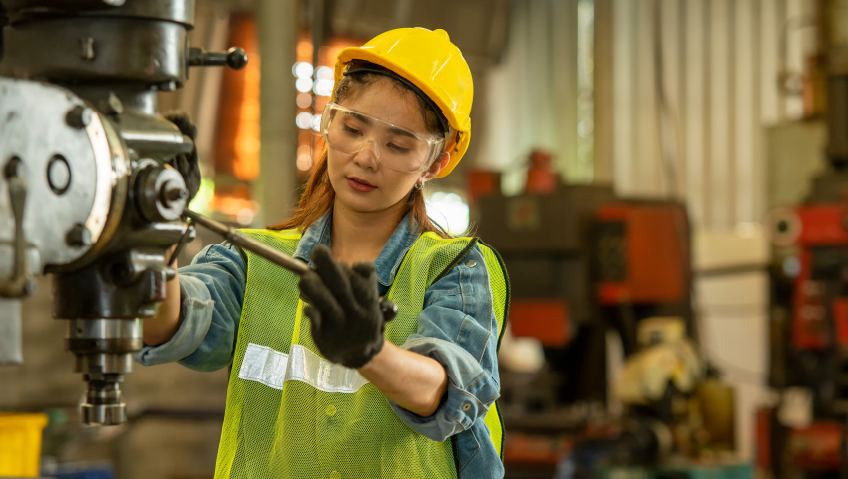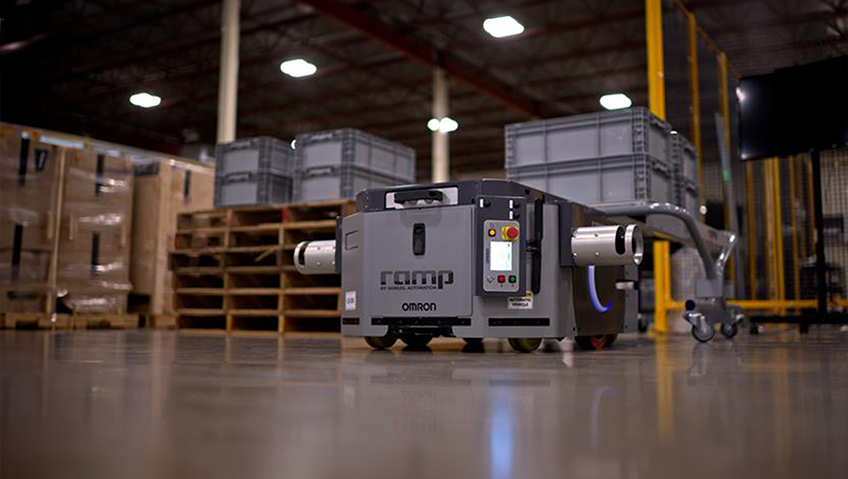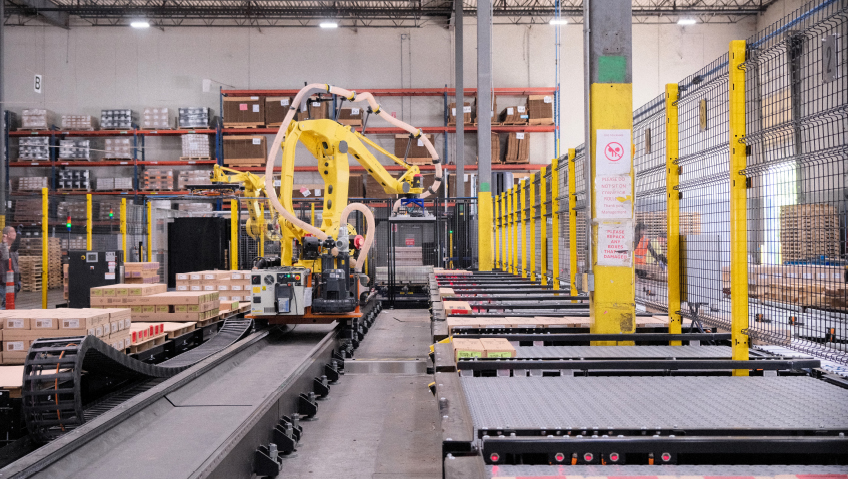A cutting-edge, family-owned automation enterprise, Kimastle Corporation has been a leading automation integrator for plastic assembly applications since 1986, offering state-of-the-art assembly solutions to the automotive, food and beverage, heavy equipment, aerospace, energy, military, and packaging sectors.
By blending robust engineering principles with more efficient and effective technologies, the company’s recent and repeatable successes have been created from using both old and new ideas. Providing in-house fabrication, CNC machining, 3D printing, robotic integration, PLC programming, sub-assembly manufacturing, R&D, program management, engineering, and design, Kimastle concentrates on offering modular, adaptable automation that is both effective and efficient.
As co-owner Kirk Gilewski, Jr. explains, “We advise them how products and machines need to be designed. We reinforce this with research and understanding what materials they’re making their parts out of, and give them suggestions upfront on the design steps all the way through to establishing and understanding their cycle time and process: how many machines, employees, or robots it will take to produce the volume they’re requesting and meet all the quality requirements the customer has for us on those items.”
On the product side, Kimastle designs a series of punch press solutions, a combination of punching a hole and welding a bracket for a Front Park Assist Sensor (FPA) or Rear Park Assist Sensor (RPA) found in the front or rear of vehicles. “We created the technology that combines traditional punch with sonic welding in one system that punches the required hole and welds a sensor attachment bracket to the backside of the fascia in one operation. This helps to reduce the overall cost and footprint and eliminates potential risks of damaging the fascia from excessive material handling,” explains co-owner Craig Gilewski.
Kimastle also boasts a standard snap press with interchangeable tooling cartridges that allows the company to snap together front fascias, rear bumpers, and grills. The automotive industry has many variations of parts that have upper, middle, and lower components such as fascias that require the equipment to be utilized for multiple variants of vehicles. The press was designed to accommodate multiple types of products and technologies such as sonic welding, IR welding, heat staking, clip driving, and degating. Its ability to quickly change tooling makes it great for customers who have multiple products with extreme geometry or changes in design.
Meanwhile, the company’s wastewater management extruded pipe system features a continuous cycle with the machine integrated into its customers’ extruder line. The product—a plastic corrugated pipe—is used in building subdivisions, farms, and cities for water runoff, and has numerous areas that need to be either cut, deburred, labeled, have seals put on, or have multiple types of tape applied, which are all different processes required to make a finished product. “The pipe is extruded continuously from the customer’s extruder and is cut to length. Our machine poke-yokes its measurements through a series of sensors and camera checks and then goes through multiple stations that cut, deburr, and robotically apply a rubber seal. Precision machined robot end of arm tooling coupled with vision guided robotics achieves a repeatable process across multiple variations of pipe and seal types,” says Kirk.
It’s a complex process found at the heart of what Kimastle does. “Customers come to us with a product that needs to be built, and we come up with the most cost-effective solution within their budget, building a piece of automation around their product,” says Craig.
“That’s what we do day in and day out: constantly taking someone’s product and developing a way to automate it and make it more efficient, bringing quality to the customer, and constantly integrating new technologies,” says Kirk. “We’re able to detect and track defects and quality issues throughout our processes which is a huge part of having the supplier base we’ve gained over the years. We have a passion for the automated solutions we provide just like the passion our customers have for their products. Many customers say we feel like an extension of their company, not just one of their suppliers. We are proud of that!”
Kimastle boasts a large supply of tools and can provide a concept or prototype or conduct R&D when necessary. The company also learns along with its clients, enabling the team to add another tool to the tool belt across all industries. This ongoing gathering of knowledge has allowed the company to help its clients fix issues in manufacturing processes and effectively utilize more advanced machinery.
“That’s where we come in; we’re the integrators,” says Craig. “We’re the ones that are doing the research and taking the latest technologies and integrating them into our special machines. We get many requests, such as wanting to reduce dependency on labor, eliminate safety risks, make the process more repeatable and robust; whatever the customer needs, we try to help find a solution.”
For the last six years, Kimastle has also been dedicated to undertaking research and development in the 3D printing space, particularly because this technology can do things not traditionally done with CNC manufacturing. “With CNC, you take a raw piece of material, and you remove the excess material to build the shape of the part, whatever your design requires,” says Craig. “Whereas with 3D printing, the material is added and allows for more creative and complex designs. This improves the function of the end product, cuts down on waste, and reduces the cost of manufacturing in most cases.”
From a machinery standpoint, Kimastle can do things that it wasn’t capable of doing when limited just to CNC manufacturing. 3D printing can use carbon infused or lighter weight plastic materials. “The biggest challenge is getting the structural integrity,” Craig adds, “meaning people always wonder, ‘how do you get plastic to be more like aluminum or steel?’”
The properties of aluminum and steel are extremely strong, and Kimastle has done the research to find high-quality materials that result in a very strong product, in most cases able to meet the same quality expected from aluminum or steel in certain regards, and then advancing its designs to make them stronger.
The company is at the point where it’s able to start taking known technology and mix it with the new, using its expertise in design and bringing it into 3D printing technology to provide very advanced products. “We have a broad history and library of different designs that we know work, and we figured out a way to make them better,” says Craig. “That’s what we do on our machines and what we do in our processes. Our focus at Kimastle is to take the latest and greatest and repurpose it for making our products better quality.”
The Kimastle baton has recently been handed off to Kirk and Craig from their dad, uncle, and grandfather respectively, and the two have big plans for a bright future, which includes diversifying the company’s sales portfolio and expanding growth into other markets. “We love automotive,” says Kirk. “It’s been great, and we’ll always have it in our sales portfolio, but looking at how we can impact and improve other industries is exciting and new, and there’s a lot of opportunity for us to expand on our military and aerospace sectors. We also find it very intriguing to look deeper into the food and medical industry and expand there also.”
Both Craig and Kirk are keen to keep Kimastle growing and expanding in the coming years. “Craig and I have been working here for over 14 years; it’s what we know,” says Kirk. “When it comes to automotive, we know it very well. There practically isn’t a plastic product on an automotive vehicle we don’t know how to automate. Our plan is to try and hold the same values and entrepreneurial mindset that our family had before us and expand on that.”
This means, once again, combining traditional methods with new ideas. “We’re both excited for our futures,” says Craig. “We think we’re going to be able to provide customers with new ideas while still retaining the same expectations they had from the past. We’re going to take what they know and show them how we can even do it better. That challenge is fun and exciting.”
They are also excited about the industry in general despite a reduction in skilled trades laborers. Both have worked in every department at Kimastle, which is what has made them so well-rounded.
“Everything we’ve been taught how to do is from everyone before us; we’re trying to expand on that now,” says Kirk. “I think a company like Kimastle offers a lot of opportunity to the people who want to be hands-on and work in an industry that really changes and molds things. Kimastle is blessed to have so many talented and hard-working employees. They are the reason the Kimastle dream is a reality.”
Other changes and innovations include the company’s K-Base, a “standardized ergonomic assembly station that provides a cost-effective, high-quality manufacturing solution.” With every top manufacturer focusing on standardization and flexibility and investing in tooling products to help increase efficiencies within their processes, K-Base’s standardized design offers numerous options and configurations to handle a large majority of manually assembled products, providing a high-quality, painted steel base with an extruded aluminum or sheet metal overhead structure that can accommodate numerous types of tooling and automated controls.
“It’s an accumulation of 30 years of experience and working one-on-one with customers and understanding their specifications and requirements for their plants and manufacturing needs,” says Craig. “We took all of that knowledge and combined it into a product that doesn’t have us reinventing the wheel right from the start.”
The K-Base platform is essentially for the person who doesn’t have automation and wants to better their manufacturing process but doesn’t know where to start. “The K-Base creates a foundation for those people to expand off of, and it reduces the number of questions people have,” Kirk explains.
“There’s no wasting time trying to figure out operator ergonomics, where the Hilo fork tubes go, or what type of control system you may need to start with,” he adds. “It means starting with a solid foundation, a standard solution that affords the ability to focus all that energy on the product.”
“That’s the most important thing; a lot of our competition loses sight of the importance of taking that time and focusing it on the customer’s product and how we can make it better in that process, and that’s the tooling,” says Craig. “All of our time and effort really goes into the tooling and with the K-Base, it no longer has to go into the design of a frame.”
There are many qualities that help the company stand out, including its ability to do almost everything under one roof. “We’re not outsourcing the design or the manufacturing,” Kirk says. “It’s not that we won’t outsource, it’s that we always try to do it in-house.”
Many customers also say they like that Kimastle isn’t afraid of proposing new ideas. The company is always willing to discuss or provide new ideas on how to make a product better and go the extra mile by providing a conceptual drawing or working with the customer on prototyping.
“That’s what keeps us on the leading edge,” says Craig. “A lot of our competition will build exactly what they’re asked, and they don’t propose new ideas. They just go until they have a problem, and then they try and find a solution.” The Kimastle team instead proposes what they think could be done to make it better right away, which is what keeps customers coming back.
“We raise expectations by being open-minded and creative throughout the process, which we think is something a lot of people are starting to lose,” says Kirk. “This is the only way we do things. And in order to be an integrator, I think it’s essential that we keep an open mind to new technologies and are always at the leading edge of it, because that’s what makes us great.”

